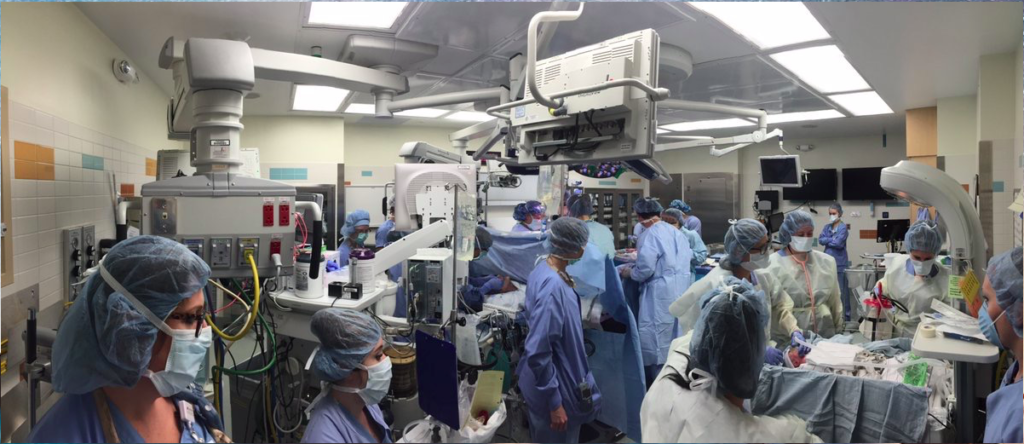Placenta Accreta Spectrum Disorders: A Critical Absence from the Cesarean Section Debate
In the last two decades, cesarean section (c-section) has become the most common major surgical operation worldwide and its rates are an important measure of obstetric practices in the 21st century.
Cesarean deliveries are not new. Historically performed to save the infant, despite occasional references to operations on living mothers, cesarean delivery was frequently used to retrieve the infant from a deceased or moribund woman. Improvements in patient care have progressively established c-section as a safe operation, both as an emergency and an elective procedure. Blood transfusions and the introduction of antibiotics and uterotonics after World War II substantially reduced poor outcomes due to c-section. Continuous advances in anesthesia and improvements in postoperative care have further contributed to declining mortality rates from c-section, first in economically developed/high-income countries and more recently in low- and middle-income countries.
C-section rates around the world
In the 1980s, the international healthcare community, led by the World Health Organization, defined the ideal c-section rate to be between 10% and 15%. The United Nations Millennium Declaration and the funding strategies have improved maternal and child outcomes in many low- and middle-income countries; however, in most sub-Saharan African countries, c-section rates have remained below the 10% target.
By contrast, rates have increased substantially in Asia, Central America and South America, creating new c-section access inequalities, with low access to emergency obstetric care in the poorest countries and high levels of c-section without medical indication in well-resourced settings, in particular in middle-income countries.
Evidence of this situation is striking in a country such as Brazil, which has one of the highest national rates of c-section in the world (53% in 2012 and rising) with a c-section rate of 43% in state-funded hospitals versus 85% in the private sector. Changes in maternal age at first birth in high-income countries and the worldwide epidemic of maternal overweight and obesity have had a direct impact on c-section rates since the beginning of this century, but these factors alone cannot explain national rates over 25% and certainly not rates over 30%.
Placenta accreta and other complications
A critical absence from the recent “c-section debate” has been the long-term health impact of excessively high c-section rates, in particular in populations with high fertility rates, such as Egypt (c-section rate 53% and fertility rate 37/1000 women) and Mexico (45% and 33/1000 women, respectively).
A 2018 systematic review confirmed that women with previous c-section are at increased risk of miscarriage, unexplained stillbirth, placenta previa, placenta accreta and abruption(in which the placenta detaches from the uterus before delivery) in subsequent pregnancies.
Placenta accreta spectrum is a complex disorder in which the placenta implants and develops on or inside the scar of a previous uterine surgical procedure. When undiagnosed before birth, attempts to remove the placenta at delivery result in massive obstetric hemorrhage and very high maternal morbidity and significant mortality rates {editor’s note – maternal deaths}.
The deeper the invasion of the previous uterine scar, the higher the risks of maternal complications during childbirth, in particular in low- and middle-income countries where trained multidisciplinary surgical teams are not available and access to blood transfusions is limited.

Special operating room for placenta accreta-percreta cases, with imagining x-ray machine and at least 15 doctors and nurses and other hospital staff in this photo
The rising rates of c-section are directly linked to the rising prevalence and incidence of placenta accreta spectrum disorder. A surgical operation designed to save the lives of women and babies may negatively impact maternal and neonatal outcomes under certain circumstances. This is a particular concern when c-section rates are above 20-25% and general obstetricians are inexperienced in managing the major surgical procedures associated with accreta placental tissue, which often require complex surgical skills.
In March 2018, the International Journal of Gynecology and Obstetrics (FIGO) published a special issue on placenta accreta spectrum disorders, including the new FIGO consensus guidelines on the epidemiology, prenatal diagnosis and surgical and conservative management of this condition, alongside a series of peer-reviewed original articles on placenta accreta spectrum that provide a comprehensive overview of this complex disorder.
The XXII FIGO World Congress of Gynecology and Obstetrics will take place in Rio de Janeiro, Brazil, from 14 to 19 October 2018, and will provide a unique opportunity to expand the debate on the consequences of high c-section rates for the many healthcare professionals around the world involved in maternal health care.
Learn more about the global epidemic of unnecessary cesarean sections

